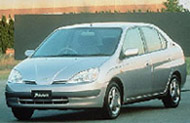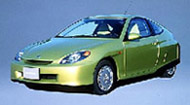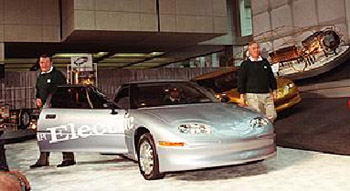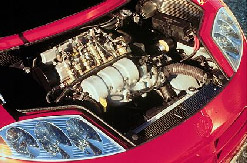Summary of 1999 Detroit International Auto Show and Potential Changes in Copper Content
Copper Applications in Automotive Area
From an environmental perspective, the Japanese are the stars at this year's North American International Auto Show. Honda and Toyota are exhibiting hybrid cars that are partially powered by electric motors. These are to go on sale here by the end of the year.
Detroit's auto-makers have nothing similar ready to market. Although Ford and DaimlerChrysler showed concept cars with environmental twists during the show's media preview week last week, General Motors did not have much new to say about its plans to make vehicles more friendly to the environment.
Yet meeting environmental challenges remains a powerful and growing concern in today's auto industry. Despite the smaller number of environmental displays at the auto show, fuel efficiency and the use of new, lightweight materials are pervasive selling points of all the newly unveiled cars, from the upscale Cadillac Evoq to the remodeled entry-level Dodge and Plymouth Neon.
The industry's environmental awareness has a selfish motivation: survival. Although huge, brawny sport-utility vehicles are hot sellers and big profit-makers today, many expect that the fad can't last. In fact, auto executives and analysts widely acknowledge that the internal-combustion engine that has powered automobiles since the beginning of the industry must eventually give way to a new, more efficient and clean kind of power train. Auto-makers continue to juggle costly research into a wide range of possible replacement technologies. The payoff is years down the road, but the penalty for being out of the race could be severe.
'One of the reasons the car companies are working so hard on these technologies is they believe that sport-utility vehicles could become uncool" said David Cole, director of the University of Michigan's Office for the Study of Automotive Transportation. "And when they do, you better have something that could become cool." "The technology is not quite there yet," Cole said. "When it is, and when the economics become attractive, I think we'll see just one of the most gigantic revolutions in automotive technology we've ever seen. Personally, I don't think we're that far away from it. I think it kicks off in the middle part of the next decade."
Honda's VV car will be the first hybrid-powered vehicle available in this country. Priced at less than $20,000, the subcompact two-seater is powered by an electric motor and a gasoline engine. It can drive about 700 miles, or roughly from New York to Detroit, on a single tank of gasoline.
The Toyota Prius, already on sale in Japan, is a four-seater compact with a hybrid power train. It also uses an electric motor and a gasoline engine. To the driver, the switch from battery power to gasoline occurs seamlessly as the car accelerates.
 |
 |
|
| Toyota Prius Hybrid | Honda Hybrid |
Both the VV and the Prius are far more convenient than fully electric cars, which need to be plugged in for battery recharges after a few hours of driving. The VV and Prius have regenerative braking systems that use brake action to recharge their batteries. They are completely cordless and never need to be recharged.
General Motors announced plans to have a hybrid-electric car ready for the 2001 model year and a fuel cell powered vehicle for 2004. Ken Baker, GM vice president of global R & D stated, "One of the reasons we have made these commitments to a hybrid car in 2001 and a fuel cell car in 2004 is to set the pace of technology."
 GM EV1
GM EV1Chrysler displayed three concept vehicles with hybrid power trains. The Dodge Intrepid ESX2 is a diesel-electric sedan that gets 70 miles per gallon with 56 percent fewer carbon dioxide emissions. It will go from zero to 60 m.p.h. in 12 seconds and drive 420 miles before requiring refueling.
 Dodge Intrepid Hybrid Propulsion
Dodge Intrepid Hybrid PropulsionThe Jeep Commander is the world's first SUV powered by a fuel cell, which produces electricity to power the drive motor. The Commander also contains a battery pack to assist with extra power and faster starting on cold days. The Commander sits on a platform that is seven inches wider than conventional SUVs and has 20-inch tires and wheels. Because it is a concept vehicle, the Commander is also equipped with sophisticated electronics, such as radar warning systems, satellite navigation, onboard PC and Internet access, and electric controls to raise the vehicle for increased ground clearance on rough terrain.
The Chrysler Citadel is an all-wheel drive sport wagon that draws its power from two sources. A 3.5-liter V-6 gasoline engine drives the rear wheels. The front wheels are powered by lead acid batteries connected to two electric motors, produced by Siemens Automotive.
Concept Vehicles
Concept vehicles at the 1999 Detroit Auto Show tended to fall into two primary categories, small roadsters and large vehicles. The large vehicles include new SUVs, pickup trucks and a combination of car and truck platforms, which could be the basis for a new type of vehicle. Examples of this new type of vehicle include:
Cadillac Evoq Roadster
This Cadillac resembles a luxury version of the Corvette, with two seats, rear wheel drive and a 4.2 liter supercharged V8. Electronic features include Night Vision Radar, a dashboard PC with Internet access, rear back-up sensors and rearview cameras that replace conventional mirrors.
Dodge Power Wagon
The Dodge Power Wagon concept truck is a muscular machine evoking the original 1946 pickup, with separated bumpers and a cross-hair grille. It is powered by a 7.2 liter, direct injection, turbocharged, in-line six-cylinder diesel engine generating 750 foot-pounds of torque. The new engine provides better fuel efficiency with reduced emissions.
Ford Thunderbird
This two-seat roadster with classic Thunderbird features is officially listed as a concept car but indications from Ford are that this will be in production for the 2001 model year.
Hyundai Santa Fe
The Korean auto-maker is proposing to manufacture this SUV for the 2001 model year with a price of less than $20,000. It is smaller than a conventional SUV and if produced, will be aimed at the economy segment of younger buyers.
Lincoln Blackwood
The Blackwood is a concept truck that combines the luxury and amenities of the Lincoln Navigator with cargo capacity of the F-150 pickup truck. The covered bed is lined with wood trim and has two rear hatches that open out instead of down (like a typical pickup). The vehicle also has leather seats, satellite navigation and electronically adjustable pedals. This vehicle could be in production late in 1999 with a $50,000 price.
Mercedes M Class
Although shown as a concept vehicle, Mercedes indicates that it plans to produce this vehicle for the late 1999 model year to expand its line of SUVs. It should sell for $36,000 to $45,000.
Mitsubishi Mad Max SSU
This concept vehicle has a wider base (three inches wider than a Chevy Suburban) and lower profile than most SUVs. Mitsubishi used a 310 horsepower, twin-turbocharged 2.6 liter V6 engine with a five speed automatic transmission. The SSU has all wheel drive, active yaw control and 20 inch wheels for improved stability and cornering. The body is designed with no central roof pillar with both doors opening from the middle of the vehicle.
Nissan SUT
Nissan presented a new product type designated SUT for sport utility truck. It is similar to the Lincoln Blackwood with four doors, a pickup truck bed and removable seats for increased carrying capacity.
New Production Vehicles
New sport utility vehicles and pickup trucks dominated the lineup of new production vehicles displayed at the auto show. BMW, Chrysler, Ford and Nissan all displayed new models of this type. Audi, Toyota and Volkswagon all presented new small coupes and sedans in an effort to convince American car buyers of the advantages of smaller cars.
It appears that trucks and SUVs are still favored by a large percentage of vehicle buyers. Trucks carried 1998 to the second-highest sales total ever, at 15.6 million light vehicles. This marks the third year in a row that light vehicle sales have exceeded 15 million units. More than 7.4 million light trucks were sold in 1998, accounting for 47.5 percent of total sales. This was accomplished despite crippling mid-year strikes at General Motors. Predictions for 1999 sales are mixed, but with low inflation and unemployment combined with high consumer confidence, it is possible that 1999 sales will be higher than 15 million again. It is also likely that light trucks will account for a larger percentage of new vehicle sales, possibly more than half.
| Ford F-series Pickup | 836,629 |
| Chevrolet C/K Pickup | 555,989 |
| Ford Explorer | 431,488 |
| Toyota Camry | 429,575 |
| Dodge Ram Pickup | 410,130 |
| Honda Accord | 401,071 |
| Ford Taurus | 371,074 |
| Honda Civic | 334,562 |
| Ford Ranger Pickup | 328,136 |
| Dodge Caravan | 293,819 |
| Source: Automotive News Data Center | |
Despite the introduction of new, smaller, fuel-efficient cars and hybrid vehicles, it appears that pickup trucks and sport utility vehicles will still dominate the light vehicle market. In many instances these trucks are also becoming larger with more options and electronic features. New options shown on vehicles at the Detroit Auto Show include, VCRs, Night Vision, Back-up radar sensors, On-board Navigation aids, E-mail and internet access, and more powerful headlights. The current low cost of gasoline and consumers' desire for larger more powerful vehicles continues to drive the design of personal vehicles and this trend should contribute to increased copper content for the foreseeable future.
Contact:
Robert D. Weed
Vice President, Rod, Bar & Mechanical Wire
Automotive and Building Construction
P.O. Box 2504
Birmingham, MI 48012
Tel: 248-642-6980
Fax: 248-642-4770
Email
Also in this Issue:
- Power Quality and Your Computer
- Property Data on The Copper Page
- Summary of 1999 Detroit International Auto Show and Potential Changes in Copper Content
